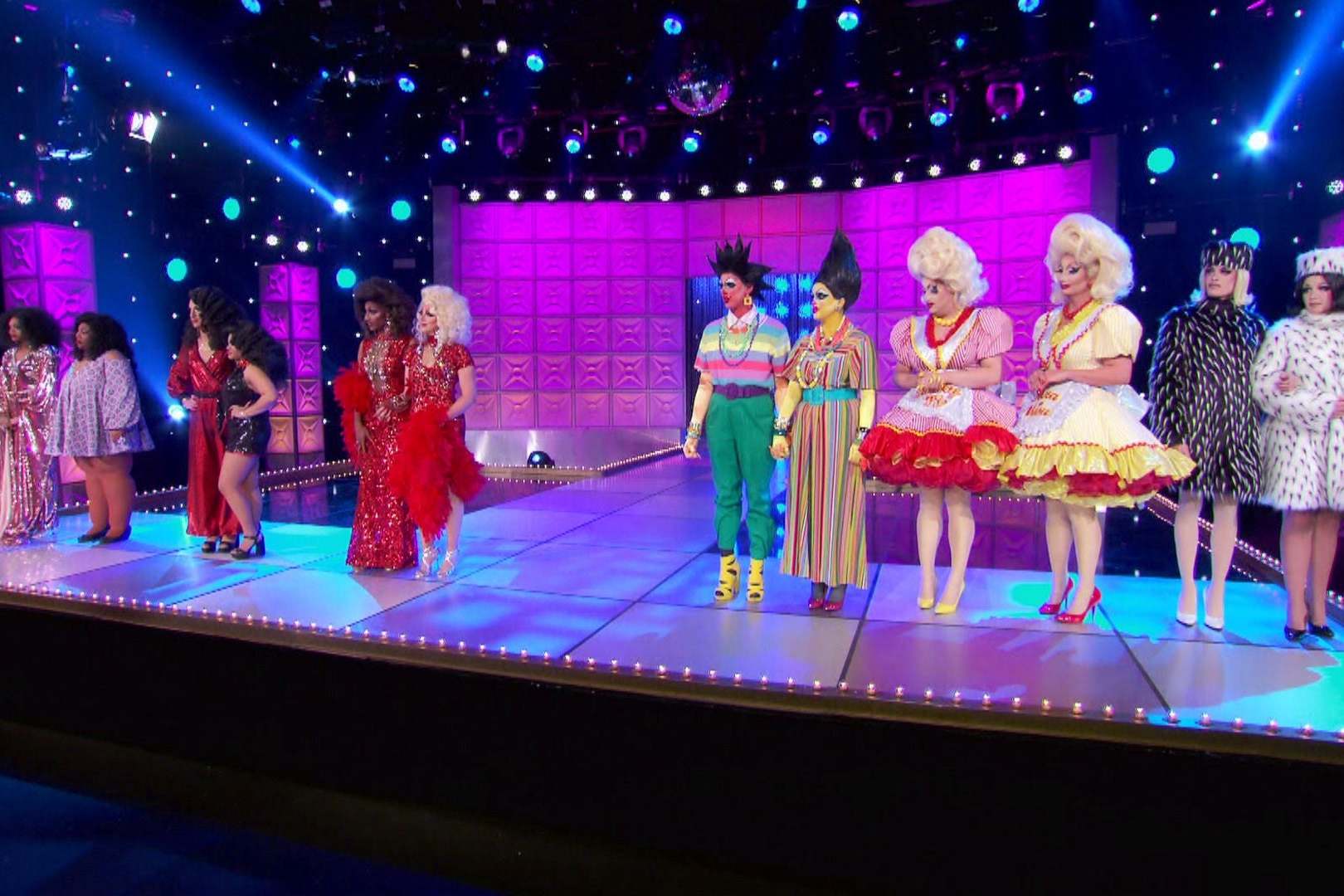RuPaul’s Drag Race needs to slow down, or risk burnout for both its fans and contestants
New seasons of the drag juggernaut are being pushed out with barely a week’s break in between, but too much of a good thing can be damaging for the show and the people who love it, Isobel Lewis writes


Your support helps us to tell the story
From reproductive rights to climate change to Big Tech, The Independent is on the ground when the story is developing. Whether it's investigating the financials of Elon Musk's pro-Trump PAC or producing our latest documentary, 'The A Word', which shines a light on the American women fighting for reproductive rights, we know how important it is to parse out the facts from the messaging.
At such a critical moment in US history, we need reporters on the ground. Your donation allows us to keep sending journalists to speak to both sides of the story.
The Independent is trusted by Americans across the entire political spectrum. And unlike many other quality news outlets, we choose not to lock Americans out of our reporting and analysis with paywalls. We believe quality journalism should be available to everyone, paid for by those who can afford it.
Your support makes all the difference.Something tells me the creators of RuPaul’s Drag Race never thought that they’d be deciding America’s next drag superstar and the winner of a $100,000 prize via a lip sync competition on Zoom. But desperate times call for desperate measures, and the queens of season 12 have faced weirder circumstances than most. With the finale airing this Friday and either Crystal Methyd, Gigi Goode or Jaida Essence Hall set to walk away with the crown, this season has been an entertaining escape for its fans, but a difficult time for the queens.
Between Sherry Pie’s disqualification – Pie would have competed in the final had she not been kicked out post filming over “predatory” catfishing claims – and the coronavirus pandemic rendering the chance of a live finale impossible, the contestants of season 12 have had a rough ride. To the show’s credit, last week’s slumber-party themed reunion was as funny and entertaining as the reunion ever is, but no amount of costume changes and death drops can change the fact that seeing the girls “lip sync for the crown” in front of a massive audience is more entertaining than it is over video link.
But it’s not just the halting of live TV that has affected the show’s contestants. Live performance is the bread and butter of most drag performers (Ru girls or not), whether through club nights, conventions, meet and greets or one-woman theatre shows and coronavirus has rendered this virtually impossible.
The queens have adapted to a tricky situation through digital drag shows, but in many ways, the pandemic has exacerbated and highlighted a problem that has been slowly building for Drag Race. Contestants have talent in spades, and therefore longer careers than most reality TV participants, but there is still a pressure to strike while the iron is hot. That’s why it’s frustrating to see season 12 immediately dovetailed by a fifth All Stars season, with not a week’s break in between.
If you’d told me when I first started watching RPDR, which began life in 2009, that I’d ever complain about the show being on TV “too much”, I’d never have believed you. And it’s not that I’m unexcited about All Stars 5, which features a stellar line-up of previously underappreciated queens (#TeamSheaCoulee, obviously) competing for a spot in the Drag Race Hall of Fame. But we can have too much of even the best things, and the show might be heading down that road.
Over the last few years, we have seen Drag Race explode in popularity, moving to a prime time spot on VH1 in the US and Netflix internationally and spawning multiple spin-off series and international versions. But in churning out content, the show risks losing faith from both its fans and contestants. The final episodes of season 12 have ran alongside the mini-series Secret Celebrity Drag Race, with the rest of 2020 likely to give us *deep breath* All Stars 5, Drag Race UK season 2, Canada’s Drag Race (presented by season 11 runner up Brooke Lynn Hytes), and Drag Race Australia. Oh, and casting for season 13 closed in January, so depending on how long lockdown lasts, we could have another main season too.
When a TV show is so popular, and has moved from a quirky fringe show to a mainstream part of the cultural zeitgeist, it’s hard to believe that anyone would want to watch less Drag Race. But as the January season of Love Island proved, seeing its average viewing figures dip by nearly 1.5 million from the previous instalment, reality TV fatigue is a real thing. RPDR highlights the talent of some seriously incredible queens, with every series bringing us more impressive and creative contestants. But there’s only so far the show can go when it is, by nature, formulaic.
With each episode featuring a usual mini-challenge, a main challenge (the Rusical, Ball challenge, sitcom parody, stand-up comedy, makeover), catwalk and lip-sync, the framework is pretty regimented. As great as it was to see British queens represented on the international stage, Drag Race UK was just Drag Race with Downton Abbey jokes. Not everyone wants to watch the same show 52 weeks a year.
It’s not just the audience who suffer from a RPDR overload. By the nature of the show, queens are at their most popular while on TV, but there are other ways to ensure a long-lasting career. The higher you rank in your season, the more memorable (or memeable) your catchphrases are; the more interesting your talent, the better chance you have of having a successful career after the show. While Drag Race’s popularity has brought new audiences to the LGBTQ+ bar scene, there are only ever a finite number of spots available for performers.

Watch Apple TV+ free for 7 days
New subscribers only. £8.99/mo. after free trial. Plan auto-renews until cancelled

Watch Apple TV+ free for 7 days
New subscribers only. £8.99/mo. after free trial. Plan auto-renews until cancelled
If you can have 10 queens perform a week, you’re likely to prioritise long-standing fan favourites and girls on the current season who are in the public eye. Financially, it makes sense, but what about the contestants who were on our TV screens less than two years ago, yet have had 38 queens pass through the Werk Room doors after them? Airing seasons back to back cuts their time short.
By the time the clubs reopen, who knows how many seasons will have passed? People want to be kept entertained during a time like this. But the cynic in me says that it’s hurting both queens and audiences to focus on instant gratification without looking to the future.
And that’s just considering queens who have made it onto the show. Not everyone can compete on Drag Race (and not everyone would want to, given the show’s fairly limited view of the art form and accused hostility towards trans applicants), but the show has been accused in the past of creating a two-tier system where those who’ve been on the show are prioritised by audiences over the performers who appear in the clubs every night.
You might think this is unfair – in the age of the internet, surely there’s enough room for everyone. But drag doesn’t just exist online. Out there in the real world, there are limits on what can be done. Producing season after season while the show is at its biggest may seem like a financially wise decision for the people at the top, but it hurts the longevity of both the show and its queens. Drag Race has always been a comfort for me, and I’ve found solace in its mix of formula and raw talent during stressful times, but we have to acknowledge that airing episode after episode, season after season, isn’t a smart move. Nobody is saying the show needs to sashay away, but a little pause would be good for everyone.
Join our commenting forum
Join thought-provoking conversations, follow other Independent readers and see their replies
Comments